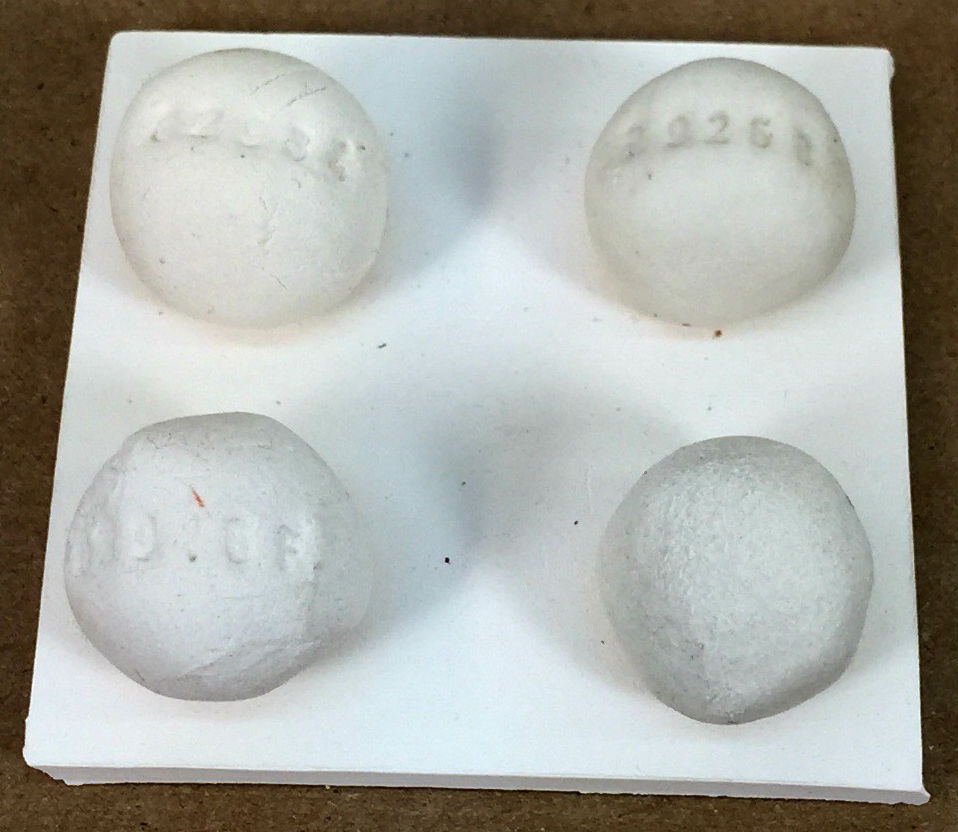Cone 6 glazes can seal the surface surprisingly early - melt flow balls reveal it
These are 10 gram balls of four different common cone 6 clear glazes fired to 1800F (bisque temperature). How dense are they? I measured the insight-live.com/glossary/72">porosity (by weighing, soaking, weighing again): G2934 cone 6 matte - 21%. G2926B cone 6 glossy - 0%. G2916F cone 6 glossy - 8%. G1215U cone 6 low expansion glossy - 2%. The implications: G2926B is already sealing the surface at 1800F. If the gases of decomposing organics in the body have not been fully expelled, how are they going to get through it? Pressure will build and as soon as the glaze is fluid enough, they will enter it en masse. Or, they will concentrate at discontinuities and defects in the surface and create pinholes and blisters. Clearly, ware needs to be bisque fired higher than 1800F.
Pages that reference this post in the Digitalfire Reference Library:
G1215U - Low Expansion Glossy Clear Cone 6, G2916F - Cone 6 Stoneware/Whiteware transparent glaze, GBMF Glaze Melt Fluidity - Ball Test, Bisque, Glaze Bubbles, Drop-and-Soak Firing, Pinholing, 760-Common frits begin melting, Glaze Blisters

This post is one of thousands found in the Digitalfire Reference Database. Most are part of a timeline maintained by Tony Hansen. You can search that timeline on the home page of digitalfire.com.
